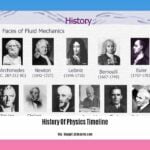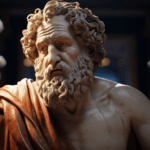[Who Were The First Electricians: Unraveling the Origins of a Brilliant Profession]. Electricity has revolutionized our world, but who were the brilliant minds behind this incredible discovery? In this article, we’ll journey back in time to meet the pioneers who illuminated the path to electrical advancement, unraveling the origins of this fascinating and essential profession.
Key Takeaways:
- Alessandro Volta invented the battery in 1800.
- Michael Faraday discovered electromagnetic induction in 1831.
- André-Marie Ampère developed the theory of electrodynamics in 1820.
Who Were The First Electricians

Electricity, the foundation of our modern world, has a rich history dating back to the early experiments of ancient civilizations. But who were the first electricians, the pioneers who laid the groundwork for our electrical infrastructure and advancements?
The earliest known electrical experiment was conducted by Thales of Miletus, a Greek philosopher, in the 6th century BC. Thales discovered that rubbing amber on fur or wool could create a static charge, attracting small objects. This phenomenon, later known as the “amber effect,” was the first recorded observation of electricity.
Centuries later, in the 17th century, William Gilbert established the distinction between electrical and magnetic forces. However, it wasn’t until the 18th century that scientists began to understand and harness electricity’s true power.
Benjamin Franklin, one of the most influential figures in electrical history, conducted a groundbreaking experiment in 1752. By flying a kite with a metal key attached during a thunderstorm, Franklin proved that lightning was a form of electricity. This experiment not only demonstrated the electrical nature of lightning but also paved the way for the invention of the lightning rod, a life-saving device that protects buildings from electrical strikes.
Alessandro Volta invented the voltaic pile in 1800, the first sustained source of electric current. Volta’s pile revolutionized the study of electricity, enabling scientists to conduct continuous experiments and paving the way for the development of batteries and other electrical devices.
With the discovery of electromagnetism by Hans Christian Ørsted in 1820 and the development of the electromagnetic motor by William Sturgeon in 1825, the field of electricity took a significant leap forward. these advancements laid the groundwork for the development of electric generators, transformers, and the electrical grid system that powers our world today.
These early pioneers and countless others who followed in their footsteps dedicated their lives to unraveling the mysteries of electricity. Their relentless pursuit of knowledge and innovation has shaped the modern world and made our lives easier, safer, and more interconnected.
Delve into the history of electricians, a captivating journey through the evolution of this essential trade.
Explore the rich History Of Electrician Trade to discover the origins, advancements, and impact of this skilled profession.
Michael Faraday: The Pioneer of Electromagnetism

Michael Faraday, an English physicist and chemist, was a groundbreaking figure in the realm of electromagnetism. With his insatiable curiosity and innovative spirit, he illuminated the path to electrical advancement.
Unveiling the Mysteries of Electromagnetism:
Faraday’s experiments with electric currents and magnets led to the discovery of electromagnetic induction. This fundamental principle underpins the generation of electricity in generators, transformers, and countless other devices we rely on today.
Shaping the Understanding of Magnetism:
Faraday also unraveled the mysteries of magnetism. He discovered diamagnetism, a property that causes certain materials to be repelled by magnetic fields. His contributions deepened our understanding of magnetic phenomena and paved the way for new technologies.
Laying the Foundation for Electrochemistry:
Faraday’s groundbreaking work extended beyond electromagnetism. He formulated the laws of electrolysis, which govern the flow of electric current through liquids. These laws laid the foundation for the development of electroplating, batteries, and other electrochemical processes.
A Legacy of Ingenuity and Discovery:
Michael Faraday’s relentless pursuit of knowledge left an indelible mark on science. His discoveries not only transformed our understanding of electricity and magnetism but also laid the groundwork for countless inventions and technological advancements. Today, his legacy continues to inspire scientists and engineers worldwide.
Key Takeaways:
- Michael Faraday was a pioneering scientist whose discoveries revolutionized the field of electromagnetism.
- He discovered electromagnetic induction, the basis of electricity generation.
- Faraday’s laws of electrolysis laid the foundation for electrochemistry.
- He unveiled the nature of magnetism and discovered diamagnetism.
- Faraday’s legacy continues to shape scientific research and technological innovation.
Relevant URL Sources:
Alessandro Volta: The Voltaic Pile and the Discovery of the Battery
In the world of electricity, one name shines brightly—Alessandro Volta. This Italian physicist paved the way for our modern electrical infrastructure with his groundbreaking invention: the electric battery.
Volta’s insights stemmed from a disagreement with Luigi Galvani’s theory of “animal electricity.” Instead, he proposed that electricity arose from the contact of different metals. This revelation led to his creation of the voltaic pile in 1800. This ingenious device, consisting of alternating layers of zinc and copper disks soaked in brine, marked a turning point. It provided the first sustained source of continuous current, revolutionizing the field of electricity.
The impact of Volta’s invention cannot be overstated. It opened doors to advancements in electrochemistry, electromagnetism, and beyond. It laid the foundation for countless electrical devices and technologies we rely on today.
Key Takeaways:
- Alessandro Volta invented the electric battery (voltaic pile) in 1800.
- Volta’s invention provided the first sustained source of electric current.
- Volta challenged Galvani’s theory of animal electricity, proposing that electricity originated from the contact of different metals.
- The volt, the unit of electromotive force, is named in Volta’s honor.
Relevant URL Sources:
George Westinghouse: AC Motors and the War of Currents
George Westinghouse: A Pioneer of Electrical Innovation
In the late 19th century, the world of electrical power was abuzz with the “War of the Currents” – a fierce battle between advocates of direct current (DC) and alternating current (AC), two competing systems for transmitting electricity. At the heart of this conflict stood George Westinghouse, an enigmatic inventor and entrepreneur who championed AC technology.
The Rise of AC Motors
Westinghouse saw the potential of AC over DC, particularly in long-distance power transmission. AC systems could be stepped up to high voltages, making them more efficient and cost-effective than DC. The key to this advancement lay in the development of AC motors, which Westinghouse tirelessly worked on.
The War of the Currents
The War of the Currents pitted Westinghouse and his AC system against Thomas Edison’s DC system. Edison vehemently opposed AC, claiming it was dangerous. But Westinghouse persisted, showcasing the safety and efficiency of AC in a series of public demonstrations.
A Turning Point: The World’s Fair
The turning point came at the 1893 World’s Fair in Chicago. Westinghouse illuminated the fairgrounds with his AC system, powering the largest electrical display the world had ever seen. This triumph propelled AC technology to the forefront, paving the way for its widespread adoption.
Key Takeaways:
- George Westinghouse: A brilliant inventor who championed AC technology, revolutionizing electrical power distribution.
- AC Motors: The key innovation that enabled efficient long-distance power transmission.
- The War of the Currents: A historic battle between AC and DC systems, with AC ultimately emerging victorious.
Relevant URL Sources:
- George Westinghouse: The Man Who Lit Up the World
- The War of the Currents: A Battle of Ideas
FAQ
Q1: Who is considered the first electrician?
A1: William Gilbert, an English physician and scientist, is widely regarded as the first electrician. He conducted pioneering experiments on electricity and magnetism in the late 16th century.
Q2: When did the term “electrician” first come into use?
A2: The term “electrician” was first used in the early 19th century to describe those who worked with electricity. However, the profession of electrical engineering did not fully develop until the late 19th century.
Q3: What were the early applications of electricity?
A3: Early applications of electricity included powering telegraph systems, lighting homes and businesses, and operating electric motors.
Q4: Who played a significant role in the development of electrical distribution systems?
A4: Thomas Edison and Nikola Tesla were two of the most prominent figures in the development of electrical distribution systems. Edison developed the direct current (DC) system, while Tesla championed the alternating current (AC) system.
Q5: How has the role of electricians evolved over time?
A5: The role of electricians has evolved from primarily installing and repairing electrical systems to also designing and maintaining complex electrical networks. Electricians now play a vital role in ensuring the safe and efficient operation of our modern infrastructure.
- Crypto Quotes’ Red Flags: Avoid Costly Mistakes - June 30, 2025
- Unlock Inspirational Crypto Quotes: Future Predictions - June 30, 2025
- Famous Bitcoin Quotes: A Deep Dive into Crypto’s History - June 30, 2025
















